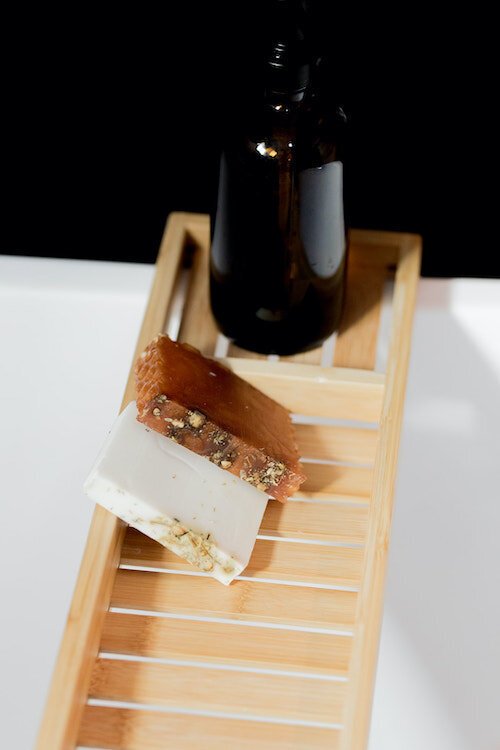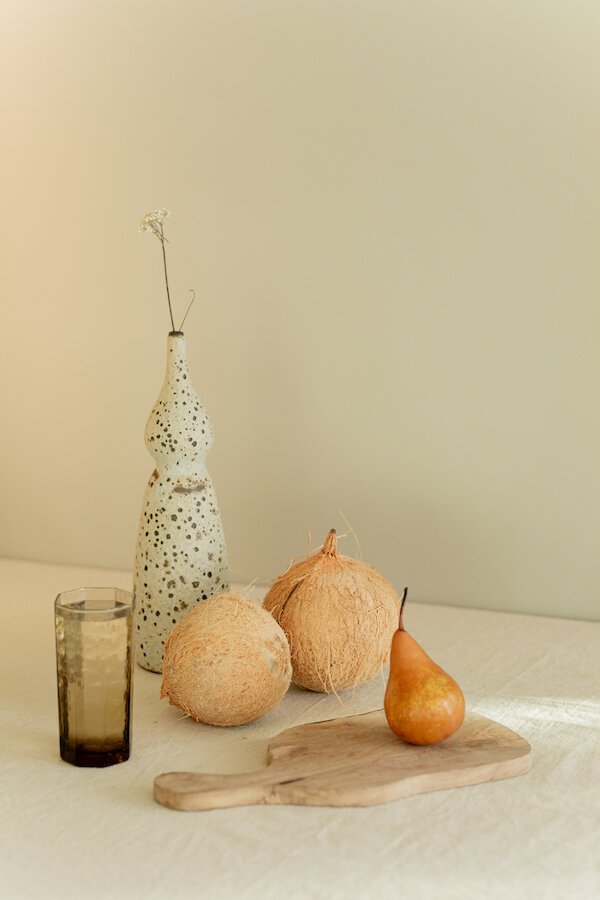
99 Sustainable Swaps To Incorporate Into Your Daily Routine
Everyone has a role they can play for a more sustainable world, whether that’s reaching out to businesses with the highest carbon footprints to hosting local swap meets with friends.
The first step we can take to be more sustainable is to examine our daily choices and see where to make a change; try bullet journaling, dumpster diaries, or ongoing conversations in your household to track habits to start and then see which switches will be most effective!
Here are 99 sustainable swaps you can incorporate into your everyday life, ranging from low-waste beauty to upgrading your home’s energy-efficient tech. While time, money, and accessibility all affect our ability to be sustainable, we hope that you’ll be able to find one (or a few!) that work well in your life.
Got some simple tips of your own? Drop them in the comments below!
For more everyday encouragement, subscribe to The Daily Good—a 30-second newsletter delivered to your inbox each morning with tips for self-care and sustainable living. 🌿
99 Sustainable Switches
1. Cut stained or torn t-shirts into rags for cleaning or on your Swiffer.
2. If you’ve got an old towel laying around, say hello to your new bath mat!
3. Take a reusable tote to the grocery store or farmer’s market instead of wondering ‘paper or plastic?’
4. Write an email to your town’s leadership advocating for more eco-friendly practices (like more accessible composting), in lieu of scrolling Instagram. 😉
5. Wrap gifts with newspapers, packaging, or magazines in place of disposable wrapping paper.
6. Eat lunch with reusable cutlery or a set from home wrapped in a cloth napkin.
7. Invest in bamboo or cotton reusable face rounds, instead of single-use ones, for your skincare routine.
8. Bring a silicone or reusable container to restaurants rather than getting to-go containers.
9. Switch your iced coffee from single-use plastic cups to mason jars or upcycled pasta jars.
10. Use a metal straw for drinks when you can. 500 million single-use straws are thrown out each day.
“Take a reusable tote to the grocery store or farmer’s market instead of wondering ‘paper or plastic?’”
11. Swap a plastic toothbrush for a bamboo one.
12. Say goodbye to traditional mouthwash bottles by using mouthwash tablets, which dissolve in water.
13. Try laundry detergent tablets or powder for a plastic-free clean.
14. Hang-dry your laundry.
15. Pick up reusable plates for your outdoor picnics, and skip the styrofoam or single-use paper.
16. Give cloth diapers a go during changing time instead of disposables.
17. Switch your battery-operated items to rechargeable batteries.
18. Turn packaging products like peanuts and paper into sensory play for toddlers.
19. Store your prepped meals and leftovers with beeswax wraps instead of plastic wrap.
20. Choose regular shipping over expedited shipping when shopping online (and opt for fewer boxes when available!).
“Choose regular shipping over expedited shipping when shopping online (and opt for fewer boxes when available!).”
21. Repurpose shipping or storage boxes into containers for your space.
22. Unsubscribe from junk mail and newsletters you no longer read both online and in real life; both require a carbon footprint.
23. Reach out to brands and businesses you admire and advocate for social, environmental, and ethical responsibility, like minimizing their carbon footprint.
24. Compost food waste.
25. Or, save the scraps for a DIY & zero-waste veggie broth.
26. Call your city’s sanitation center to understand what they do or don’t accept for plastic recycling.
27. Bring new life into old clothes by using natural dyes.
28. Hear ye, hear ye: Swap your Q-Tips for a reusable ear swab.
29. Ordering takeout or delivery? Request “no cutlery” and use your own from home.
30. Do laundry with washing bags, like the GuppyFriend, to catch microplastic pollutants.
“Unsubscribe from junk mail and newsletters you no longer read both online and in real life; both require a carbon footprint.”
31. Get softer skin by applying used coffee grounds as an exfoliant.
32. Or use those coffee grounds as an easy DIY plant fertilizer!
33. Transform minis and sample containers into on-the-go pill packs, instead of buying travel size accessories.
34. Paper towels? No, thanks—opt for reusable towels.
35. In the words of Arthur, having fun isn’t hard when you have a library card. Borrow & swap at the library instead of purchasing books you may not even read.
36. When it’s available and possible, go for loose produce. (Or, bring reusable produce bags!)
37. Buy in bulk for items you know you’ll buy again and again to avoid excess packaging.
38. Say goodbye to liquid dish soap and containers with bar soap.
39. Better yet, grab Castile soap as an all-in-one product for hand and dish soap, household cleaner, and more.
40. If Castile soap isn’t your thing, distilled vinegar works for almost all your cleaning needs.
“Transform minis and sample containers into on-the-go pill packs, instead of buying travel size accessories.”
41. Go secondhand via thrift shops, garage sales, and estate sales for home decor and trinkets like plant pots, vases, and more.
42. Borrow tools from neighbors (and vice versa) so you don’t all have to purchase the same products.
43. Got a leftover wine bottle or other vessel? DIY it into a candle holder!
44. Skip the bottle of makeup remover and use coconut, olive, or jojoba oil depending on your skin type.
45. Shampoo bottles are out, too—consider shampoo bars instead.
46. Charmin or Scott’s? Neither, if you make the sustainable switch to a bidet.
47. Try a plastic-free safety razor for a close shave, without the excessive waste.
48. Walk, bike, skate, or public-transport it to work—if a car is a must, give carpooling a go.
49. Make laundry low-waste with dryer balls over single-use sheets.
50. When it’s that time of the month, try period underwear or a menstrual cup. It can be more cost-effective and eco-friendly than tampons and pads.
“Make laundry low-waste with dryer balls over single-use sheets.”
51. Clear up a window sill and turn it into a mini-herb garden rather than buying new every few weeks.
52. Consider eco-friendly and non-toxic cleaning supplies—if you have a cleaning company you work with, ask if they can make the switch, too!
53. Get involved with your local community garden—along the way, you’ll learn more about composting, plants, and other sustainable initiatives.
54. Screw in energy-efficient light bulbs around the house.
55. Buh-bye, Ziplocs! Make the switch to reusable baggies.
56. Purchase an e-reader for tech-friendly (and sustainable) reading.
57. Try eating plant-based each week, like Meatless Mondays.
58. Before throwing away an item, ask if there’s any part of it that can be reused, repurposed, or fixed—even shoelaces can be upcycled!
59. DIY natural scrubs or masks with ingredients you already have for when you need a little spa time.
60. Limit how long you let the shower or sprinkler run, especially in water-drought areas.
“Before throwing away an item, ask if there’s any part of it that can be reused, repurposed, or fixed—even shoelaces can be upcycled!”
61. Skip the trip to the mall and host a local clothing swap with friends.
62. Turn empty candle containers into jars for sauce, drinks, or plants.
63. Ferment, pickle, or store ingredients in empty sauce containers.
64. Keep dressing and condiment bottles for homemade versions.
65. Turn an old sweater into your pet’s next modeling outfit.
66. Shop local by signing up with a CSA for nearby produce.
67. And when you are shopping at major chains, shop for seasonal produce.
68. Cut overripe bananas into pieces to store in the freezer for baking, eating, or smoothies.
69. Eaten your bananas already? Save the peels and soak them overnight in water for a nutrient-rich water to use on plants!
70. Part with moldy, smelly sponges and switch to an eco-friendly dish brush.
“Keep dressing and condiment bottles for homemade versions.”
71. Try plastic-free floss instead of the traditional nylon; your pearly whites and the environment will thank you.
72. Look for toothpaste that comes in an aluminum tube, like David’s. Hello, recycling!
73. Brew loose-leaf tea to avoid wasting tea bags.
74. Seek out packaging-free shops or groceries near you and bring reusable containers.
75. If you love baking, invest in a silicone mat and you’ll no longer need parchment paper or aerosol non-stick sprays.
76. Bring worn down clothes to a textile donation center to avoid landfills.
77. Learn which sustainable fabrics work best for your preferred style and shift away from virgin polyester or rayon.
78. Make sure your green is clean, too 💵: Look at green banking options for sustainable saving and investing.
79. Keep windows open (or closed) depending on the temperature in order to use less electricity.
80. Sign up for an organic meal delivery service or an organic produce delivery box—these can help you limit your food waste when cooking!
“Seek out packaging-free shops or groceries near you and bring reusable containers.”
81. Stop by used bookstores and library sales to pick up gently read books.
82. Learn about local sustainability initiatives and movements in your community and how to get involved over your next lunch break, like how to join the next weekend clean up or new environmental bills and proposals.
83. Learn how to mend, sew, or darn clothes—it’s a calming exercise and doesn’t leave you wondering what to do with hole-y socks.
84. Shop with businesses who prioritize low-waste or made-to-order practices.
85. Opt for classic items you know you’ll use, over collecting new or mini samples.
86. If you celebrate the holidays with a tree, bring it to a local composting center or nursery when you’re done.
87. Need to buy a new car soon? Check out hybrid and energy-efficient models; some areas even offer discounts or rebates for being eco-friendly!
88. Keep wilting herbs from going bad by turning them into long-lasting ice cubes.
89. Rather than giving away clothes that no longer fit (or buying new ones), see if you can get more life out of them with tailoring.
90. Don’t feel like you need to purchase brand new frames for your home; consider thrifting frames and giving them a DIY paint job to match the space.
“Don’t feel like you need to purchase brand new frames for your home; consider thrifting frames and giving them a DIY paint job to match the space.”
91. Pick up a reusable water bottle that works for your lifestyle—taking into account sizes, materials, and whether or not you prefer a straw.
92. Share baked goods with friends and package them in upcycled fruit and veggie containers.
93. Repurpose takeout containers for seed sprouting—they make a great mini greenhouse!
94. Keep like-new bags from previous presents for the next round of gifting.
95. Switch to reusable trash bags instead of plastic bags.
96. Planning a home reno, anyway? See if you can convert your home’s energy grid to solar.
97. No more plastic filters needed with a charcoal water filter.
98. Sign up for digital magazine or newspaper subscriptions over hard copies.
99. Join a community swap group to sell and find gently used items like furniture, electronics, and sports gear.
Henah Velez (she/her) is an Editor at The Good Trade. She holds a Master’s in Social Entrepreneurship and is a proud Rutgers grad. Originally from NJ, Henah’s now in Santa Barbara, CA, where she loves shopping small, hanging with her pets, or traveling. Say hi on Instagram!





